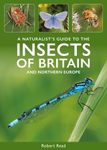Field / Identification Guide
By: Philip H Smith(Author)
96 pages, colour photos, 1 colour map
![Insects of the Sefton Coast Insects of the Sefton Coast]()
Click to have a closer look
About this book
Customer reviews
Related titles
About this book
This book describes the insect fauna of the sand dunes of the Sefton Coast in north Merseyside in North West England; the largest example of this rare habitat in England. As this book will show, coastal dunes are renowned for specialist insects that are rarely, if ever, found in the wider countryside. They also abound in flower-rich grasslands that have otherwise largely disappeared from the British landscape and on which many insects depend. By the mid-20th century around half of the Sefton duneland had been lost. Indeed, it is remarkable that so much of it survived, together with most of its precious flora and fauna.
Nowadays, the dunes are largely safeguarded, reflecting their importance for coast protection, public recreation, education and scientific research, as well as for their unique wildlife. However, all is not well. Development may still be allowed right up to the edge of protected sites and, while things have improved recently, manpower and funding for essential dune management have been cut and replaced by over-reliance on volunteers. As described in the book, large areas of open dune habitat, essential for our specialised insects, have been smothered by dense scrub. Declines in British wildlife over the last 70 years or so have been well documented.
One of the main themes of the book is how quickly the insect fauna is changing in response to climate change. Dozens of species that were unknown here a decade or two ago are now commonplace and many others will be here soon. These changes provide strong evidence of the impacts of climate change and strengthen the urgency of tackling it.
Customer Reviews (1)
-
Great local insect review
By
Paul
6 Apr 2023
Written for Paperback
The author has a vast knowledge of the Sefton Coast and its fascinating insect life and is very up-to-date with records. I visited sites for the first time for a few days in May 2018 (mainly to see Northern Dune Tiger Beetle) and it is an excellent site for an entomologist/photographer, with a number of rarities included as well as commoner species. This informative and very well-illustrated book makes one want to return to the area. Having seen numerous White Satin moth larvae on my trip I was sad to read of a population collapse in this species in 2021 and 2022. There is plenty of information on the sites and a map of key sites. Scientific and English names of insects mentioned in the text are given, along with references. Naturalists living in the area, visiting, or with an interest in it, need to own this 96 pp, very reasonably priced book. The author and publishers are to be congratulated for producing it.
6 of 6 found this helpful
-
Was this helpful to you? Yes No
Field / Identification Guide
By: Philip H Smith(Author)
96 pages, colour photos, 1 colour map





































